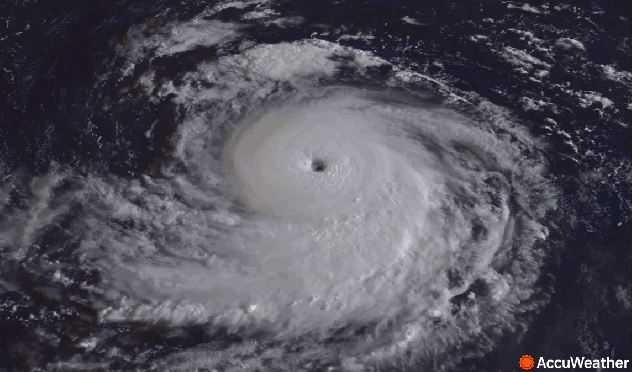Atlantic hurricane season to spawn more powerhouse storms
 |
Hurricane Franklin spinning over the Atlantic on AccuWeather's RealVue™ Satellite on Aug. 28, 2023. |
AccuWeather forecasters have issued an update to the 2023 Atlantic hurricane season forecast, increasing the number of major hurricanes -- Category 3 or stronger with maximum sustained winds of 111 mph or greater -- from one to three to three to five.
The update comes as AccuWeather expects Lee to intensify into the strongest hurricane of the season with the potential for it to peak at Category 5 strength.
The total number of named tropical storms is predicted by AccuWeather forecasters to be 13 to 17, which has remained consistent since an update to the seasonal outlook released in early August. Four to eight storms are expected to strengthen further, reaching hurricane force.
So far, this season has been pacing ahead of the historical average. Twelve named tropical storms and one unnamed subtropical storm are in the books. Four hurricanes and two major hurricanes have developed over warm ocean waters as of Sept. 6, with Lee now the latest hurricane to form.
Have the app? Unlock AccuWeather Alerts™ with Premium+
In comparison, the historical average date for the third hurricane of the Atlantic basin to develop is Sept. 7, and the historical average for the season's second major hurricane formation is Sept. 29.
Two to four direct impacts are forecast for the United States, including in Puerto Rico and the Virgin Islands. There have already been two landfalls in the U.S., including Harold's landfall in South Texas and Idalia's landfall along the west coast of Florida.
This hurricane season could be the eighth in a row with a total number of named storms being at or above the historical average of 14. The last time a season ended below this benchmark was in 2015, when only 11 named systems developed.
Historically, a climax in tropical activity occurs over the Atlantic between mid-August and mid-October, with the climatological peak of hurricane season falling on Sept. 10. That is due to a number of factors, including widespread warm ocean waters and less Saharan dust and disruptive winds across the basin during this timeframe.
Looking back through history, many noteworthy major hurricanes developed during the month of September, including Irma, Rita, Maria, Ike and Isabel. Hurricane Irma became the first Category 5 storm to strike the Leeward Islands when it struck in September 2018. It was followed up two weeks later by a catastrophic hit from Hurricane Maria.
Later in the season, a strengthening El Niño will increase the frequency and coverage of vertical wind shear, or changing winds with altitude that, when strong, can limit tropical storm development and organization, across the Atlantic basin. However, sea-surface temperatures are at record levels, and tropical storms and hurricanes thrive on warm water.
AccuWeather forecasters say frequent storms will churn across the ocean through early October until El Niño reduces tropical activity.
The Atlantic hurricane season officially ends on Nov. 30.
Want next-level safety, ad-free? Unlock advanced, hyperlocal severe weather alerts when you subscribe to Premium+ on the AccuWeather app. AccuWeather Alerts™are prompted by our expert meteorologists who monitor and analyze dangerous weather risks 24/7 to keep you and your family safer.


